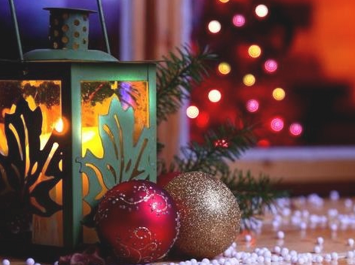Household Hazards, Holiday-Style
Almost as reliable a tradition at this time of year as reading "The Night Before Christmas" and watching "It's a Wonderful Life" is -- at least among public safety officials -- issuing warnings about the household hazards that come with celebrating the holidays. And that's likely to continue as the number of people in the U.S. who are injured at their homes from holiday-related accidents continues to grow dramatically. As the above video describes, the number who've ended up going to hospital emergency rooms has increased from 12,000 in 2009 to 15,000 in 2012. So it's risen to about 250 per day, says the Consumer Product Safety Commission.
The causes in 2012, uh, broke down to things like falling from ladders; leaving candles unattended; carelessly selecting and maintaining Christmas trees; and decorating under the influence of alcohol. If you've watched "National Lampoon's Christmas Vacation" you've already seen a kind of slapstick version of the CPSC's list, but ER personnel would likely agree that the following list is a classic that bears another reading, and needs to be taken more seriously than ever:
LADDERS
1. Heed the warning labels on ladders. Read CPSC's OnSafety blog, "Ladder Safety 101," for tips to prevent ladder falls this season.
TREES AND DECORATIONS
1. Buying a live tree? Check for freshness. A fresh tree is green, its needles are hard to pull from branches, and the needles do not break when bent between your fingers. The bottom of a fresh tree is sticky with resin, and when tapped on the ground, the tree should not lose many needles.
2.Setting up a tree at home? Place it away from heat sources, such as fireplaces, vents, and radiators. Because heated rooms rapidly dry out live trees, be sure to monitor water levels daily, and keep the tree stand filled with water. Place the tree out of the way of foot traffic, and do not block doorways with the tree.
3.Buying an artificial tree? Look for the label: "Fire Resistant." Although this label does not mean that the tree will not catch fire, the label does indicate that the tree is more resistant to catching fire.
4.Decorating a tree in a home with small children? Take special care to avoid sharp, weighted, or breakable decorations. Keep trimmings with small removable parts out of the reach of children, who could swallow or inhale small pieces. Avoid trimmings that resemble candy or food that may tempt a child to reach for and swallow them.

CANDLES
1. Keep burning candles within sight. Extinguish all candles before you go to bed, leave the room, or leave the house.
2.Keep candles on a stable, heat-resistant surface. Place candles where kids and pets cannot reach them or knock them over. Lighted candles should be placed away from items that can catch fire, such as trees, other evergreens, decorations, curtains and furniture.
LIGHTS
1.Use lights that have been tested. Select lights tested for safety by a nationally recognized testing laboratory, such as Underwriters Laboratories (UL), Intertek (ETL) or the Canadian Standards Association (CSA). Lights for both indoor and outdoor use must meet strict requirements that testing laboratories are able to verify. On decorative lights available in stores, UL's red holographic label signifies that the product meets safety requirements for indoor and outdoor use. UL's green holographic label signifies that the product meets requirements for indoor use only.
2. Check each set of lights. Examine new and old lights for broken or cracked sockets, frayed or bare wires, or loose connections. Throw out damaged sets, and do not use electric lights on a metallic tree.
3.Check each extension cord. Make sure each extension cord is rated for the intended use and is in good condition. Do not use cords with cuts or signs of fraying.
4. Check outdoor lights for labels. Look for labels indicating that the lights have been certified for outdoor use, and only plug them into a ground-fault circuit interrupter (GFCI)-protected receptacle or a portable GFCI.
FIREPLACES
1.Use care with "fire salts." Fire salts produce colored flames when thrown onto wood fires. Fire salts contain heavy metals that can cause intense gastrointestinal irritation and vomiting, if swallowed. Keep fire salts away from children.
2. Do not burn wrapping papers in the fireplace. A flash fire may result from burning wrapping papers because wrappings can ignite suddenly and burn intensely.
More about homes at the holidays:
Today's Homes Burn Faster Than Ever
Green Christmas: 3 Ways to Help the Environment This Holiday Season
Black Ice: Are You Responsible for Keeping It Off Your Property?
More on AOL Real Estate:
Find out how to calculate mortgage payments.
Find homes for sale in your area.
Find foreclosures in your area.
Find homes for rent in your area.
Follow us on Twitter at @AOLRealEstate or connect with AOL Real Estate on Facebook.

